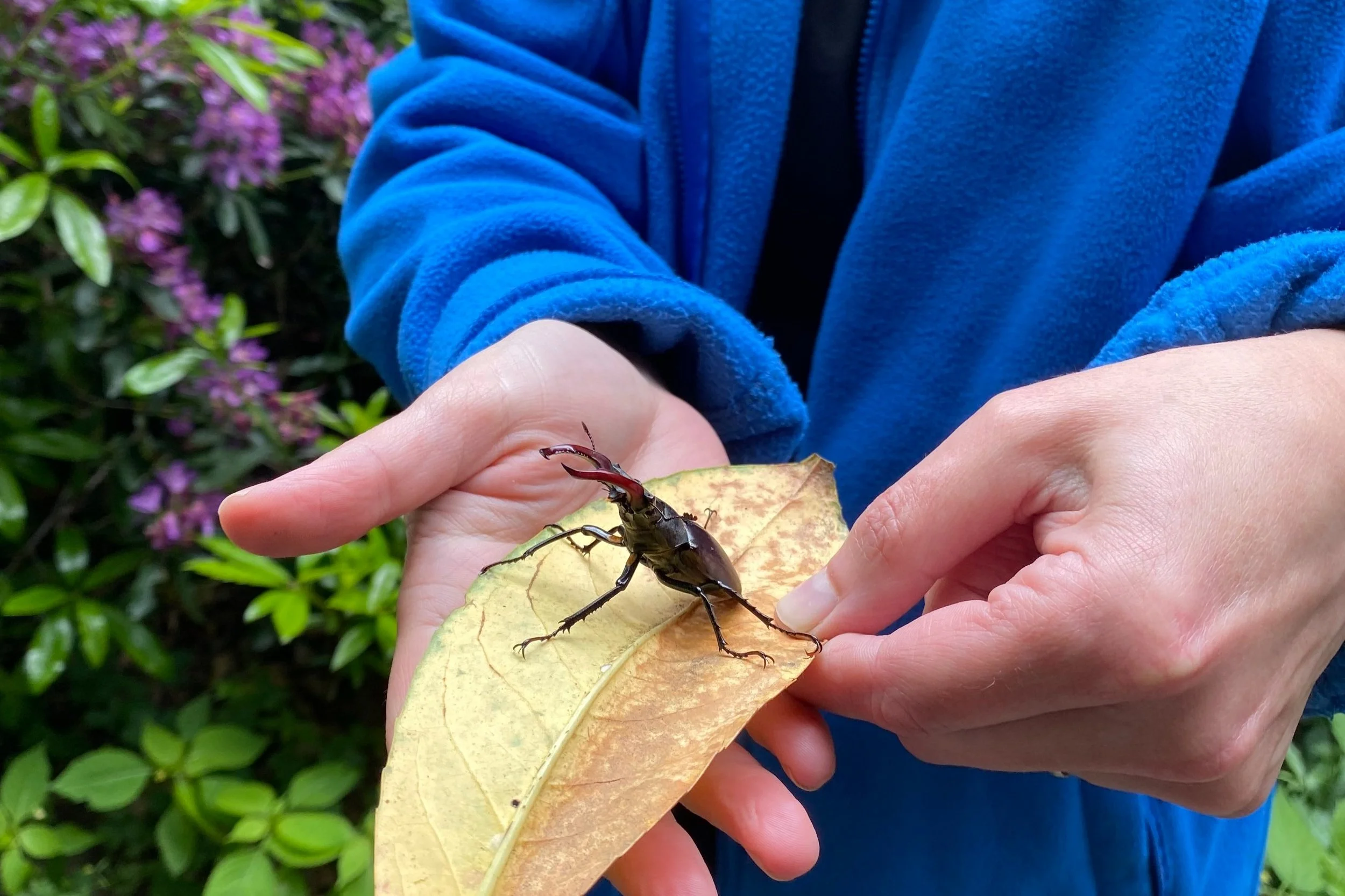The Great Stag Hunt
This summer, Heath Hands volunteers are participating in the ‘Great Stag Hunt’. This important survey, organised by the People's Trust for Endangered Species (PTES), aims to monitor the magnificent stag beetle (Lucanus cervus), the UK's largest land beetle and a protected species. Their presence here on the Heath is an important indicator of a healthy, biodiverse ecosystem, and every recorded sighting helps to inform scientists on how best to target their conservation efforts in this large-scale European initiative.
Stag Beetle found in Kenwood
Monitoring
In practice, stag beetle monitoring involves walking a set transect (or route) for 1/2 hour around sunset, 6 times during June and July, looking for flying stag beetles (more likely to be the male beetles) and any that can be found on the ground (more likely to be females looking for nesting sites).
Stag beetle monitoring in action
Vital habitat
Hampstead Heath provides vital habitat for stag beetles. These impressive insects thrive in woodlands, parks and gardens, relying on buried decaying wood for their larvae to feed and grow for several years. While London remains a crucial stronghold, particularly in the south and west, habitat loss due to "tidying up" dead wood and urban development poses a significant threat.
The Heath's abundance of veteran deciduous trees, and the practice of leaving dead wood to decay naturally, provides essential habitat for these beetles and other important organisms that break down dead organic matter and recycle nutrients back into the ecosystem.
Learning about stag beetles before the survey
Life Cycle of a Gentle Giant
Stag beetle larvae spend an incredible 3 to 7 years underground, consuming decaying hardwood. Once they pupate and emerge as adults, they live for only a few weeks, typically from mid-May to August. Adult males can reach up to 75mm in length, boasting impressive antler-like mandibles.
These adapted mandibles aren't for eating (adults can only sip liquids like tree sap); instead, they're used to attract mates (the bigger the ‘antlers’, the better!) and to wrestle other males for the right to reproduce.
On warm summer evenings, male stag beetles can be seen taking to the air with a distinctive buzz in search of females, who usually remain on the ground, emitting pheromones to signal their presence.
You can Learn more about the fascinating ecology of stag beetles here.
Stag beetle loggery
Conservation
Beyond the Great Stag Hunt, Heath Hands volunteers work alongside City of London rangers to protect these fascinating insects by actively conserving existing dead wood habitats and creating new ones in the form of loggeries — purpose-built homes for stag beetles (you can adopt one here!).
These hands-on woodland management practices, combined with the vital data collected during surveys, are essential for the long-term survival of stag beetles on Hampstead Heath – and beyond!
Details about how you can take part in the Great Stag Hunt can be found here.
For tips on how to help encourage these magnificent flying machines in your own garden, click here.




